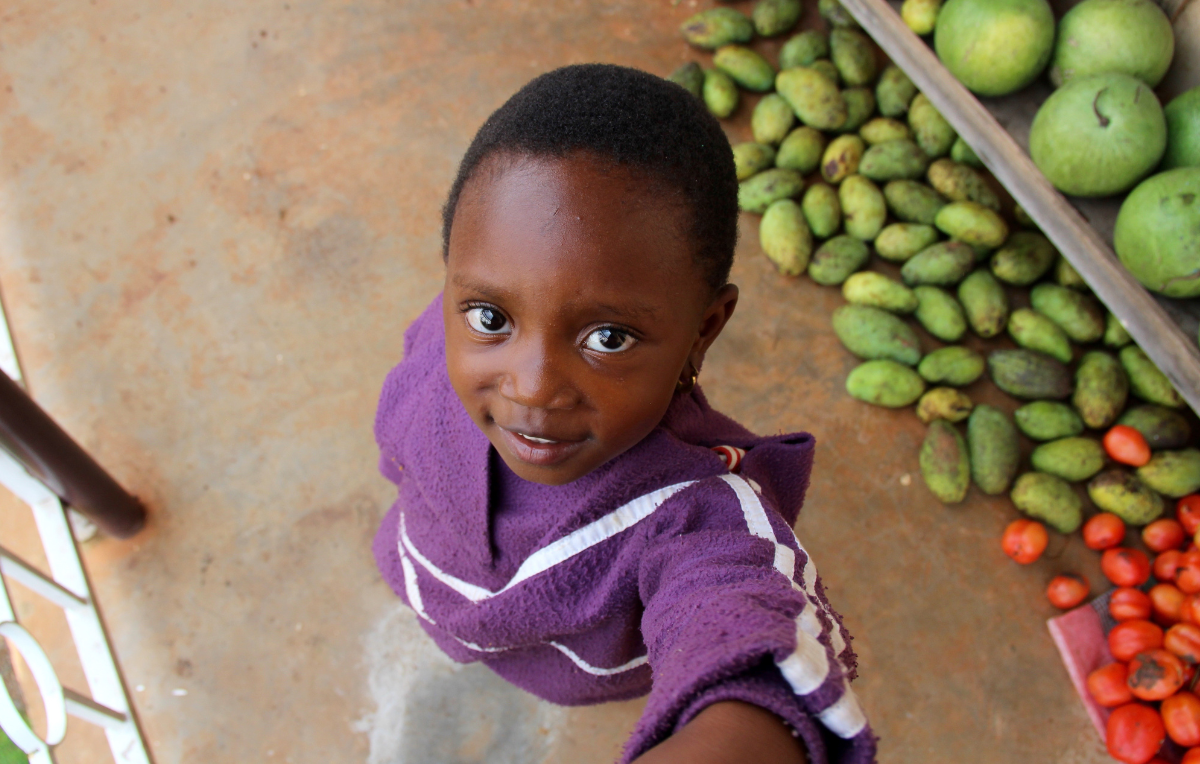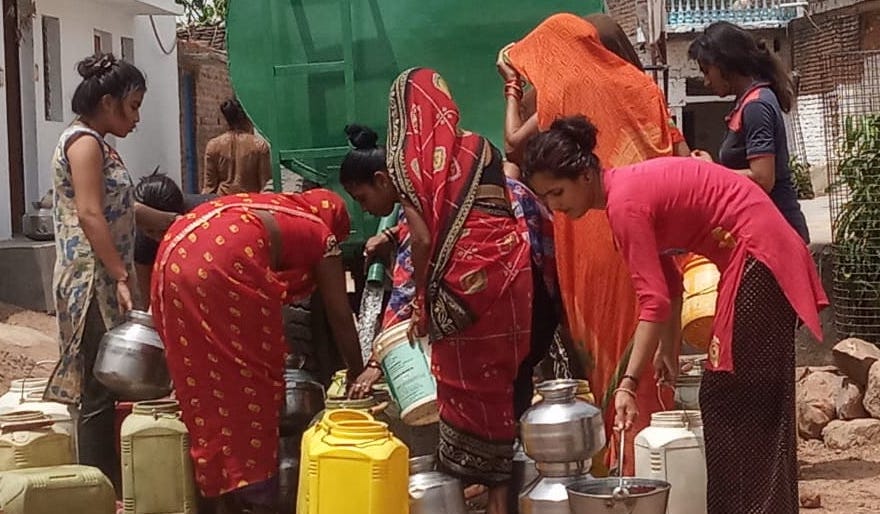The Himalayan Institute Cameroon Energy Farming campus in Kishong Village is supporting the Total Health Program with new ingredients for medicinal formulations. Most recently, Energy Farming Program Leader Lilian Gupie organized a harvest of calendula flowers.
Back at the Community Center in Kumbo, the flowers will be dried and processed. They can then be combined with locally available organic oils to create an ointment that alleviates burns, bites, abrasions, and other skin conditions.
On the other side of the Kishong farm, the first two hives of a new apiary have already been colonized. The apiary was established to demonstrate an effective pollination technique, Lilian explains, but in the meantime the hives will produce honey and beeswax, which are effective bases for Total Health oral medicines and ointments, respectively. In the coming months, as the scale of cultivation in Kishong increases, more Total Health products will be produced locally, putting preventative health care firmly in the hands of Cameroonians.
In addition to herbal plots filled with brahmi, ashwagandha, calendula, turmeric, and ginger, there are plots devoted to the two crops with which every farmer in Cameroon is intimately familiar: corn and beans. Such is the prevailing mind-set that many farmers refuse to even attempt organic farming, believing that it is impossible to grow these food staples without expensive chemical fertilizers. Demonstration plots like these are the kind of concrete proof needed to break generations-old habits and encourage a new paradigm of commercially viable, wholly sustainable agriculture.
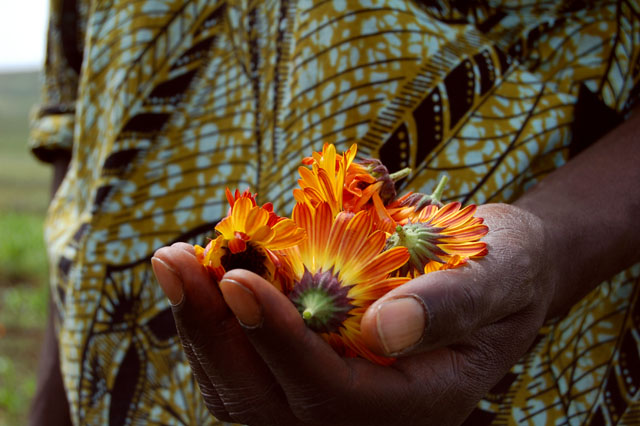
A handful of freshly picked calendula flowers.
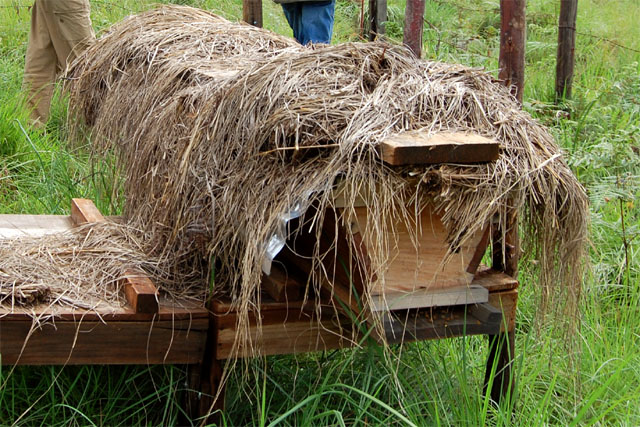
Beehives that are kept cool with long grass cuttings.
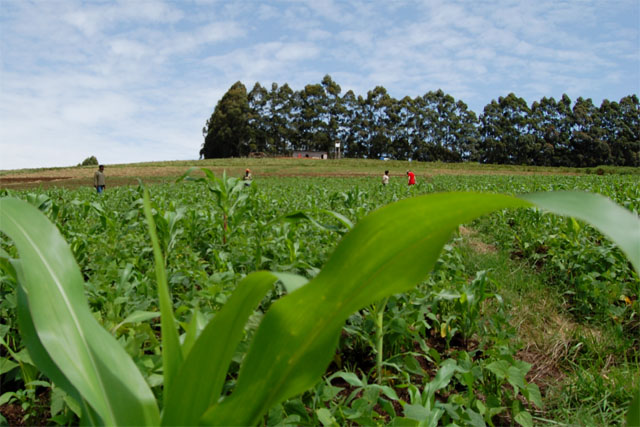
Fields of organic corn and beans at the Himalayan Institute Cameroon Energy Farming campus in Kishong Village.

